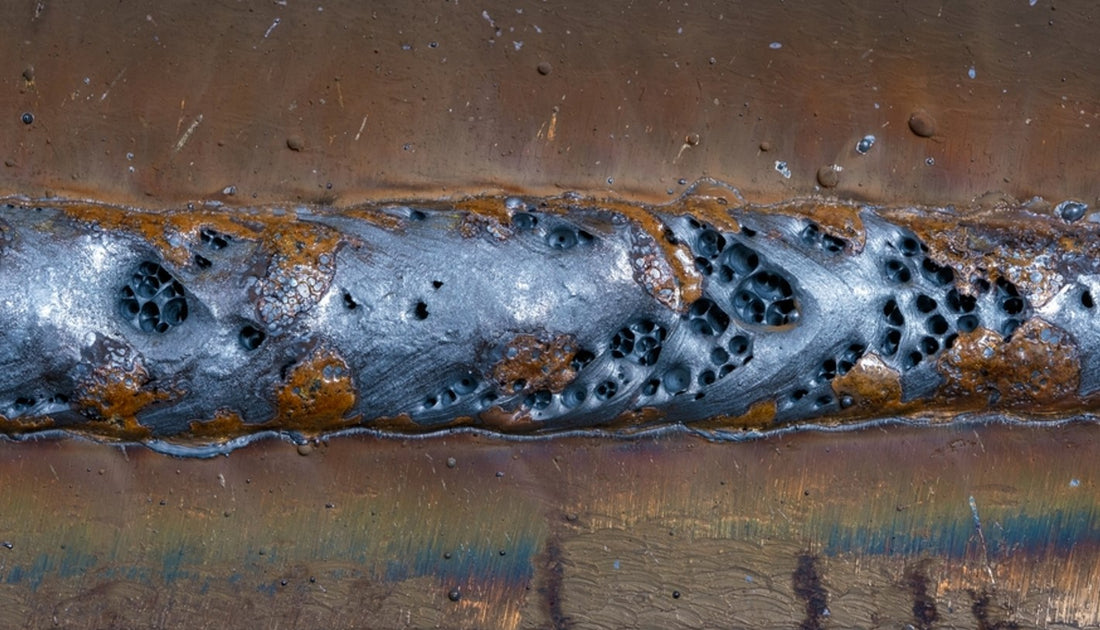How to Identify What is Porosity in Welding and Improve Your Strategy
How to Identify What is Porosity in Welding and Improve Your Strategy
Blog Article
The Science Behind Porosity: A Comprehensive Guide for Welders and Fabricators
Recognizing the detailed devices behind porosity in welding is important for welders and fabricators making every effort for impressive workmanship. From the composition of the base materials to the details of the welding procedure itself, a wide range of variables conspire to either exacerbate or relieve the existence of porosity.
Understanding Porosity in Welding
FIRST SENTENCE:
Assessment of porosity in welding reveals critical understandings right into the honesty and top quality of the weld joint. Porosity, characterized by the existence of dental caries or gaps within the weld steel, is a common worry in welding procedures. These spaces, if not effectively attended to, can endanger the structural integrity and mechanical buildings of the weld, bring about prospective failings in the finished product.

To detect and quantify porosity, non-destructive testing methods such as ultrasonic testing or X-ray assessment are commonly used. These techniques permit the identification of internal problems without jeopardizing the stability of the weld. By examining the dimension, form, and circulation of porosity within a weld, welders can make educated choices to enhance their welding procedures and accomplish sounder weld joints.

Aspects Affecting Porosity Development
The event of porosity in welding is affected by a myriad of aspects, varying from gas protecting performance to the intricacies of welding criterion setups. One crucial factor contributing to porosity development is poor gas securing. When the securing gas, usually argon or carbon dioxide, is not effectively covering the weld swimming pool, atmospheric gases like oxygen and nitrogen can contaminate the molten metal, leading to porosity. Additionally, the sanitation of the base products plays a significant duty. Impurities such as corrosion, oil, or wetness can vaporize during welding, creating gas pockets within the weld. Welding criteria, including voltage, existing, travel speed, and electrode type, also influence porosity development. Making use of improper setups can generate extreme spatter or warmth input, which subsequently can cause porosity. The welding method employed, such as gas steel arc welding (GMAW) or shielded steel arc welding (SMAW), can affect porosity formation due to variants in warm distribution and gas insurance coverage. Comprehending and regulating these aspects are vital for minimizing porosity in welding procedures.
Effects of Porosity on Weld Top Quality
The visibility of porosity likewise deteriorates the weld's resistance to rust, as the entraped air or gases within the voids can respond with the surrounding environment, leading to destruction over time. In addition, porosity click here to find out more can hinder the weld's capability to endure stress or effect, further jeopardizing the overall top quality and dependability of the welded structure. In vital applications such as aerospace, automobile, or structural building and constructions, where safety and security and resilience are paramount, the detrimental results of porosity on weld top quality can have severe effects, highlighting the importance of minimizing porosity via appropriate welding strategies and procedures.
Strategies to Reduce Porosity
To enhance the top quality of welded joints and make sure architectural integrity, welders and fabricators utilize particular techniques focused on decreasing the development of spaces and cavities within the material throughout the welding process. One reliable technique to minimize porosity is to make sure proper material prep work. This includes detailed cleaning of the base steel to remove any type of impurities such as find out oil, oil, or dampness that could add to porosity development. Additionally, making use of the appropriate welding parameters, such as the proper voltage, existing, and travel speed, is crucial in stopping porosity. Keeping a consistent arc length and angle during welding additionally helps minimize the chance of porosity.

Additionally, choosing the ideal protecting gas and maintaining proper gas flow rates are necessary in decreasing porosity. Using the appropriate welding technique, such as back-stepping or employing a weaving activity, can also aid disperse warm equally and minimize the possibilities of porosity development. Guaranteeing appropriate ventilation in the welding environment to get rid of any kind of possible resources of contamination is crucial for accomplishing porosity-free welds. By implementing these strategies, welders can effectively minimize porosity and generate premium welded joints.

Advanced Solutions for Porosity Control
Executing sophisticated technologies and ingenious techniques plays a pivotal role in attaining remarkable control over porosity in welding processes. One innovative option is making use of sophisticated gas combinations. Protecting gases like helium or a mix of argon and hydrogen can aid minimize porosity our website by giving better arc stability and enhanced gas coverage. Furthermore, using sophisticated welding techniques such as pulsed MIG welding or customized atmosphere welding can additionally help minimize porosity issues.
Another sophisticated remedy entails making use of innovative welding devices. For circumstances, making use of equipment with built-in functions like waveform control and innovative power sources can enhance weld top quality and reduce porosity risks. The execution of automated welding systems with precise control over parameters can significantly minimize porosity problems.
Additionally, integrating advanced monitoring and inspection technologies such as real-time X-ray imaging or automated ultrasonic testing can assist in detecting porosity early in the welding process, enabling prompt rehabilitative activities. Generally, integrating these sophisticated solutions can significantly improve porosity control and boost the total high quality of welded components.
Conclusion
In verdict, comprehending the scientific research behind porosity in welding is necessary for welders and fabricators to create premium welds - What is Porosity. Advanced solutions for porosity control can additionally enhance the welding procedure and ensure a strong and dependable weld.
Report this page